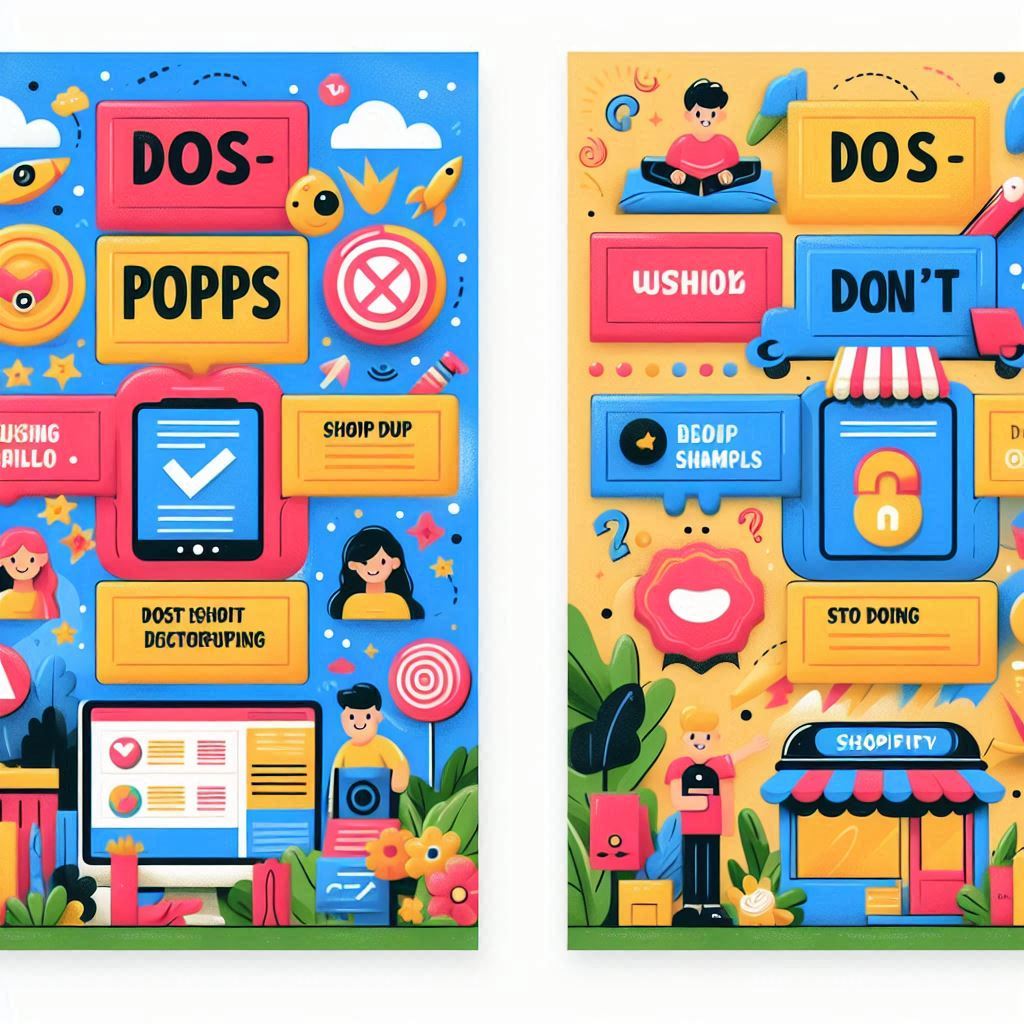The Dos and Don’ts of Using Popups on Shopify
Popups can be a powerful tool for Shopify store owners when used effectively. They can capture leads, promote special offers, and reduce cart abandonment rates. However, if not implemented correctly, they can frustrate users and drive potential customers away.
This article outlines the essential dos and don’ts of using popups on your Shopify store, providing insights on how to maximize their effectiveness while maintaining a positive user experience.
By understanding the nuances of popup implementation, you can ensure that your Shopify store benefits from this powerful feature without alienating your audience.
Understanding Your Audience and Their Needs
Before implementing popups, it’s essential to understand your audience and their preferences. Conducting research on customer behavior and demographics can provide valuable insights into what types of popups will resonate most with your visitors. For instance, first-time visitors might respond better to a welcome offer, while returning customers could be more interested in loyalty discounts.
Additionally, timing plays a crucial role in the effectiveness of popups. If a popup appears too early, it may disrupt the user experience; conversely, if it appears too late, users may not engage with it at all. Monitoring user interaction with your site can help you determine the best moments to present popups, ensuring they feel relevant and timely.
Lastly, consider the device your audience is using. Mobile users have different needs and behaviors compared to desktop users. Tailoring your popups for various devices can enhance user experience and improve engagement rates across the board.
The Importance of Clear and Compelling Messaging
The messaging within your popups should be clear and concise. Users should immediately understand the purpose of the popup and what action you want them to take. Avoid using jargon or overly complex language that might confuse visitors. Instead, focus on straightforward, engaging language that communicates the value of your offer.
In addition to clarity, your messaging should be compelling. Use persuasive language that highlights the benefits of taking action, such as “Get 20% off your first order!” or “Join our newsletter for exclusive deals!” By effectively communicating the value of your popup, you can increase the likelihood that users will engage with it.
Best Practices for Designing Effective Popups
Keep It Simple and Visually Appealing
A visually appealing popup will capture attention without overwhelming users. Use clean designs, contrasting colors, and legible fonts to ensure that your message stands out. Avoid cluttering the popup with too much text or multiple calls to action, as this can confuse users and decrease engagement.
Implement A/B Testing
A/B testing is a valuable strategy for optimizing your popup performance. By creating two different versions of a popup and testing them with different audience segments, you can determine which design or messaging resonates more effectively. Analyze engagement metrics such as click-through rates and conversion rates to identify the most successful approach.
Additionally, consider testing various elements of your popups, including timing, placement, and even the specific offers you present. A data-driven approach will enable you to refine your popup strategy over time, maximizing conversions and enhancing user experience.
Timing and Frequency: Finding the Right Balance
One of the most crucial aspects of using popups effectively is timing. Presenting a popup too soon after a user arrives on your site can disrupt their experience and lead to higher bounce rates. Instead, consider using exit-intent technology, which triggers popups when a user is about to leave the site. This allows you to capture potentially lost sales by offering a last-minute incentive.
Another factor to consider is the frequency of your popups. If users are bombarded with multiple popups during a single visit, they may quickly become annoyed and abandon your site. To strike the right balance, set frequency limits for how often a user sees the same popup.
For example, consider allowing a popup to appear only once per session or once every few visits. This approach will help maintain a positive user experience while still effectively communicating your message.
Finally, be mindful of the context in which users encounter popups. Tailoring the timing based on user behavior, such as time spent on the page or scrolling activity, can increase engagement and conversion rates.
Key Takeaways
- Understand your audience and tailor popups to their needs.
- Use clear and compelling messaging to communicate value.
- Design visually appealing and simple popups that don’t overwhelm users.
- Implement A/B testing to optimize your popup strategy.
- Pay attention to timing and frequency to avoid annoying users.
Conclusion
Popups can be an effective tool for boosting conversions in your Shopify store when used wisely. By following the dos and don’ts outlined in this article, you can create a positive user experience. For further tips and tools to enhance your online store, Smartarget offers valuable resources to help you succeed.
